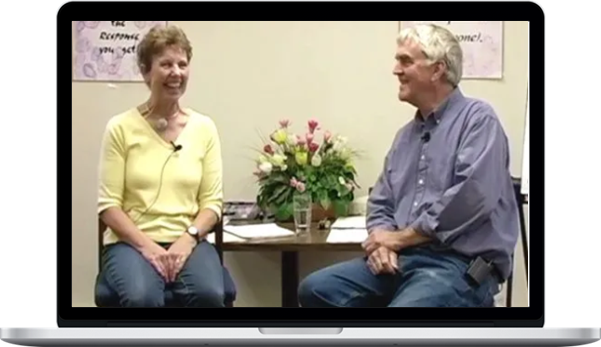Steve Andreas – Transforming Your Self
$245.00 $123.00
Total Sold: 1
»Instant Delivery
Description
Steve Andreas – Transforming Your Self
Description Of Transforming Your Self
Complete 3-Day Training With Steve Andreas
People have realized for centuries that a strong identity provides both a keel and a compass as we sail the seas of life, maintaining stability and direction despite winds, weather, and currents. But if your self-concept is poorly constructed, it won’t work very well in storms, and may steer you onto the rocks. Stability can also interfere with changing direction when you want to do that. This training teaches you how your self-concept functions, and how to use those understandings to make your self-concept work better.
11 Hours of Online Video Training
A well-functioning self-concept is:
- a. Resilient, durable and lasting (available when you need it most).
- b. Accurate (fits with reality).
- c. Self-correcting (responsive to feedback).
- d. Unconscious (as in peak performance).
- e. Connecting with others, rather than separating.
- f. Free of self-importance, arrogance, and all the other consequences of egotism.
Your self-concept is a generalization, a self-belief, that you make about what kind of person you are. It’s not a single thing; it’s composed of many different qualities or abilities (tenacity, intelligence, kindness, etc.).
From your wealth of memories (and future forecasts) you select experiences of having a quality, and then collect them and assemble them into an internal mental structure.
Like your name, your self-concept goes through time and across contexts. Changes in it will generalize very widely in time and space, often in unexpected ways.
Since it’s a process that describes itself, it’s self-referential and self-generating, a feed-forward, goal-oriented system that creates itself, and is self-reinforcing.
Since it’s only one of many possible generalizations that you could make from your wealth of memories and forecasts, it can always be changed to another one that works better. Understanding the detailed structure of self-concept allows us to easily make changes that improve how it works.
Why Buy Streaming Video When You Can Get The Same Information Much Cheaper In Book Form?
There are many possible answers to that question. Many people find it much easier to learn from a live training than from a book. A live training is like a song; there is the content (the verbal lyrics) and there is the nonverbal delivery of the lyrics (the key, the melody, the timing, emphasis, etc.) that makes a song that is heard a much richer experience than the written score alone. The gestures and other nonverbal responses available in a video often clarify what would be difficult or impossible to describe in words.
This doesn’t have to be an either/or choice. Many trainings have very few written handouts, or none at all. The book that this training video is based on is the most complete “handout” you could possibly imagine, so you can immerse yourself in the video, free of any need to take written notes, secure in the knowledge that you can always refer to that section of the book. Every training is somewhat unique in the questions asked, and the problems that participants encounter, providing additional breadth of experience.
Trainers who want to expand and add to their skills may find it useful to learn from this extended experience of Steve Andreas’s relaxed yet well-organized training style at its best, even if they are already familiar with the content.
Technical note
This single-camera footage is unedited, “fly on the wall,” complete except for a few minutes now and then when the recording failed.
Steve Andreas always wears a microphone, and any demonstration subject always wears a microphone, so their sound quality is very good. Participants don’t have microphones, so sometimes it’s hard to hear their comments or questions clearly. However the gist of what they said is usually clear from the context, and Steve’s response to it.
Bonus Video! Building Self-Concept Demonstration
In addition to the 11+ hours of regular video, you’ll also get a free demo of how to use this information with a client, sold elsewhere for $39. In this demonstration Peter learned how to think of himself as lovable, and the wide-ranging impact of this change is demonstrated in follow-up interviews with Peter and his wife.
“Steve Andreas’ Transforming Your Self is not only a must read, it is a must do book. So much of self help these days enumerates the habits and abilities that you need to be successful. Unfortunately, that doesn’t tell you how you can acquire those traits in a way that matches who you are. By doing the step by step instructions in Steve’s book you can build a self-concept that can have you performing the way you always wanted to.
“I know because I lost 70 pounds in 6 months by creating a self concept of ‘I am a healthy eater.’ Using Steve’s process I was able to:
Identify all the times when I was a healthy eater. I wasn’t as bad as I had thought.
Establish the deep motivation, not just will power, to be even more of a healthy eater, regardless of what was going on in my life.
Redirect all the habits and beliefs that prevented me from consistently being a healthy eater.
“I have kept the weight off for over 5 years, and I have no fear of it ever coming back.”
~Wayne A. Perry III
About Steve Andreas
Steve Andreas, M.A., was introduced to NLP in 1977, and was one of the first in a small group to be certified as NLP practitioner, master practitioner, and trainer by the co-developers in 1979, along with his partner, Connirae. He and Connirae co-edited four of the early classic Bandler/Grinder books, Frogs into Princes, Trance-formations, Reframing, and Using Your Brain—for a CHANGE. Steve Andreas and Connirae together wrote Heart of the Mind, and Change Your Mind—and Keep the Change.
Steve Andreas has also written Virginia Satir: The Patterns of her Magic, modeling how Satir used NLP principles in her work with families, and Transforming Your Self: Becoming Who You Want To Be, modeling the submodality structure of self-concept and how to change it quickly and easily.
In his two-volume book, Six Blind Elephants, Steve Andreas presents a unified field theory for how all changework is the result of three variables. Steve’s most recent book, Transforming Negative Self-Talk, offers two volumes of simple methods to work with inner voices.
More courses from the same author: Steve Andreas
Delivery Policy
When will I receive my course?
You will receive a link to download your course immediately or within 1 to 21 days. It depends on the product you buy, so please read the short description of the product carefully before making a purchase.
How is my course delivered?
We share courses through Google Drive, so once your order is complete, you'll receive an invitation to view the course in your email.
To avoid any delay in delivery, please provide a Google mail and enter your email address correctly in the Checkout Page.
In case you submit a wrong email address, please contact us to resend the course to the correct email.
How do I check status of my order?
Please log in to HealingCourse account then go to Order Page. You will find all your orders includes number, date, status and total price.
If the status is Processing: Your course is being uploaded. Please be patient and wait for us to complete your order. If your order has multiple courses and one of them has not been updated with the download link, the status of the order is also Processing.
If the status is Completed: Your course is ready for immediate download. Click "VIEW" to view details and download the course.
Where can I find my course?
Once your order is complete, a link to download the course will automatically be sent to your email.
You can also get the download link by logging into your HealingCourse account then going to Downloads Page.
Related products
Total sold: 3







